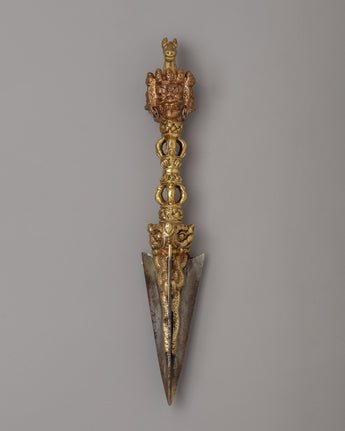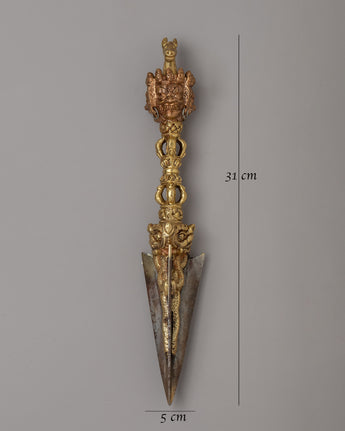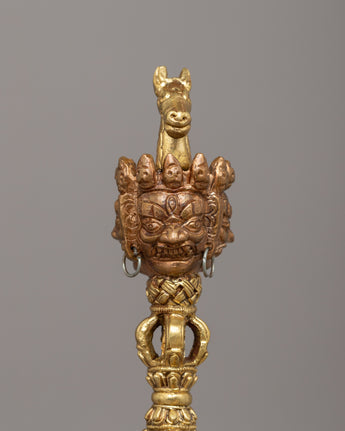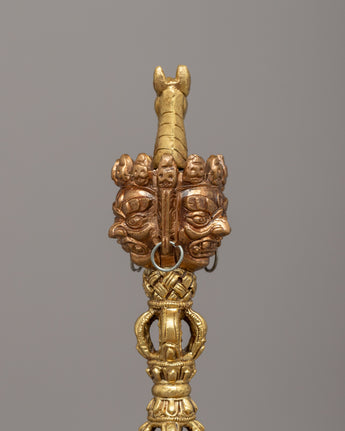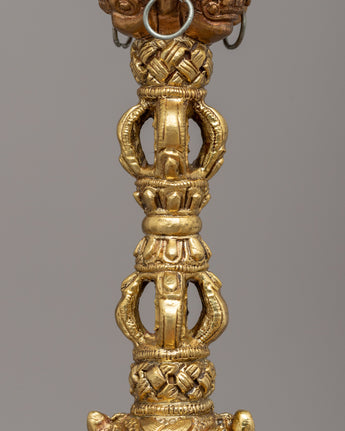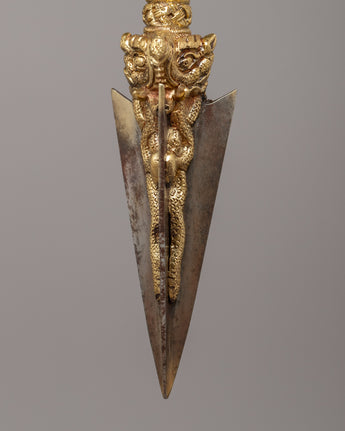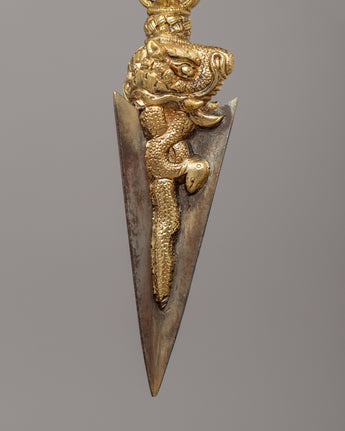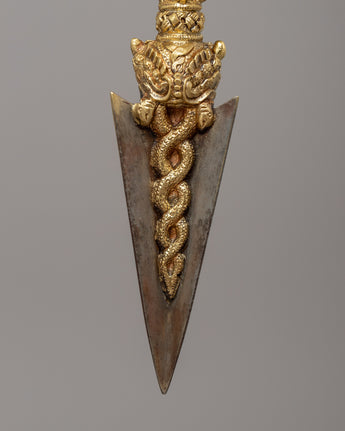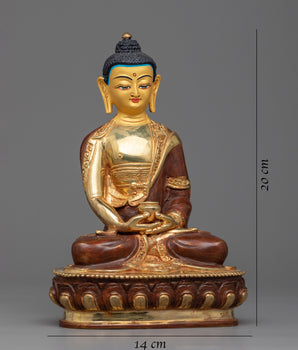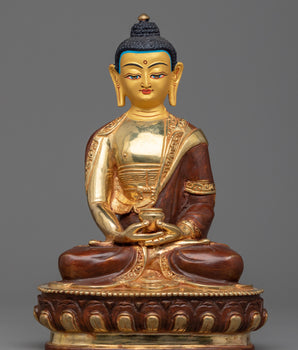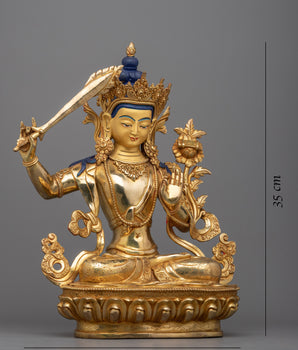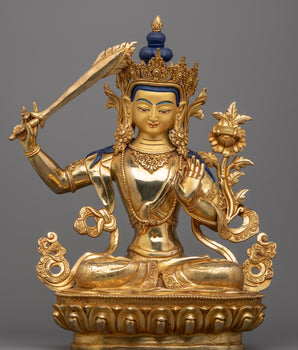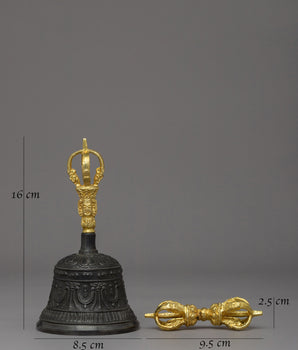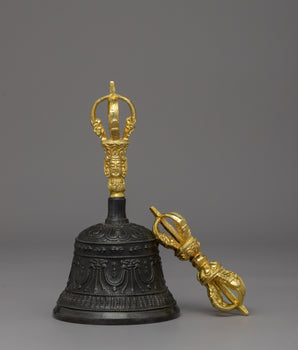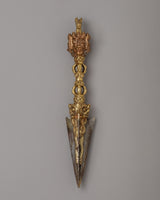
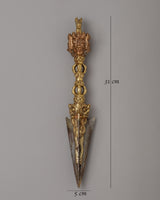
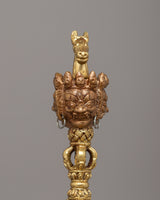
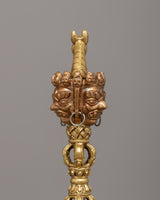
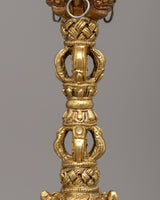
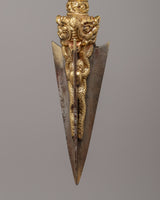
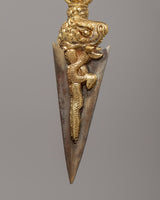
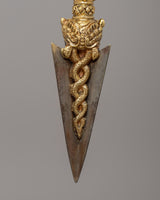
Phurba with Hayagriva Head | A Powerful Ritual Tool

100% AUTHENTIC

HANDMADE

FREE SHIPPING
Handcrafted Phurba with Hayagriva Head
--------------------------------------------
Size: 31 cm(Height) x 5 cm(Width)
Weight: 0.914kg
Materials: Brass, Copper, Iron
--------------------------------------------
About The Ritual Item :
The Phurba with Hayagriva Head copper made measures 31 cm high, 5 cm wide, and weighs 0.914 kg, is a powerful ritual object crafted from brass, copper, and iron. The top of the dagger features a detailed Hayagriva head, a wrathful deity known for removing obstacles and negative energies. Hayagriva is depicted with a brass horse's head, symbolizing swift power and the ability to defeat ignorance and spiritual blockages. Intricate circular motifs surround the head, further enhancing its spiritual significance.
The design of the phurba is unique, combining not only the fearsome figure of Hayagriva but also a ceremonial tool used in spiritual practices for grounding, protection, and the removal of harmful energies. The elongated iron made blade tapers to a sharp point, symbolizing the ability to cut through illusions, while the sacred knots around the upper shaft add to its ritualistic power. The Hayagriva head gives this phurba a distinctive identity, representing a unique blend of divine power and spiritual protection, making it a central element in Tibetan ritual practices. The balance of brass, copper, and iron ensures durability while maintaining an aesthetically rich and symbolically powerful design.
Introduction To The Phurba :
The ceremonial dagger (Sanskrit: Kila; Tibetan: phurba) is important for the expelling of evil and is thought to be especially effective in neutralizing the forces that obstruct Tantric Buddhist practice. It has ancient origins, first appearing in the Indian Rg Veda as the core blade of the vajra used by Indra to destroy the primordial cosmic snake Vritra. Kila, which means peg or stake in Sanskrit, was most likely associated with Vedic sacrifices. Meditation on the Vajrakila Tantra, an early Indian scripture first promoted in Tibet in the eighth century by Padmasambhava, one of the founding teachers of Tibetan Buddhism, is used to invoke the three-headed Vajrakila Buddha.
How to set up your own Buddhist Shrine?
Find a clean, quiet, and uncluttered spot
Set up an altar table, and cover it with an altar cloth that calls to you
Place your sacred item (statue, thangka, or a picture of Buddha) at the center


